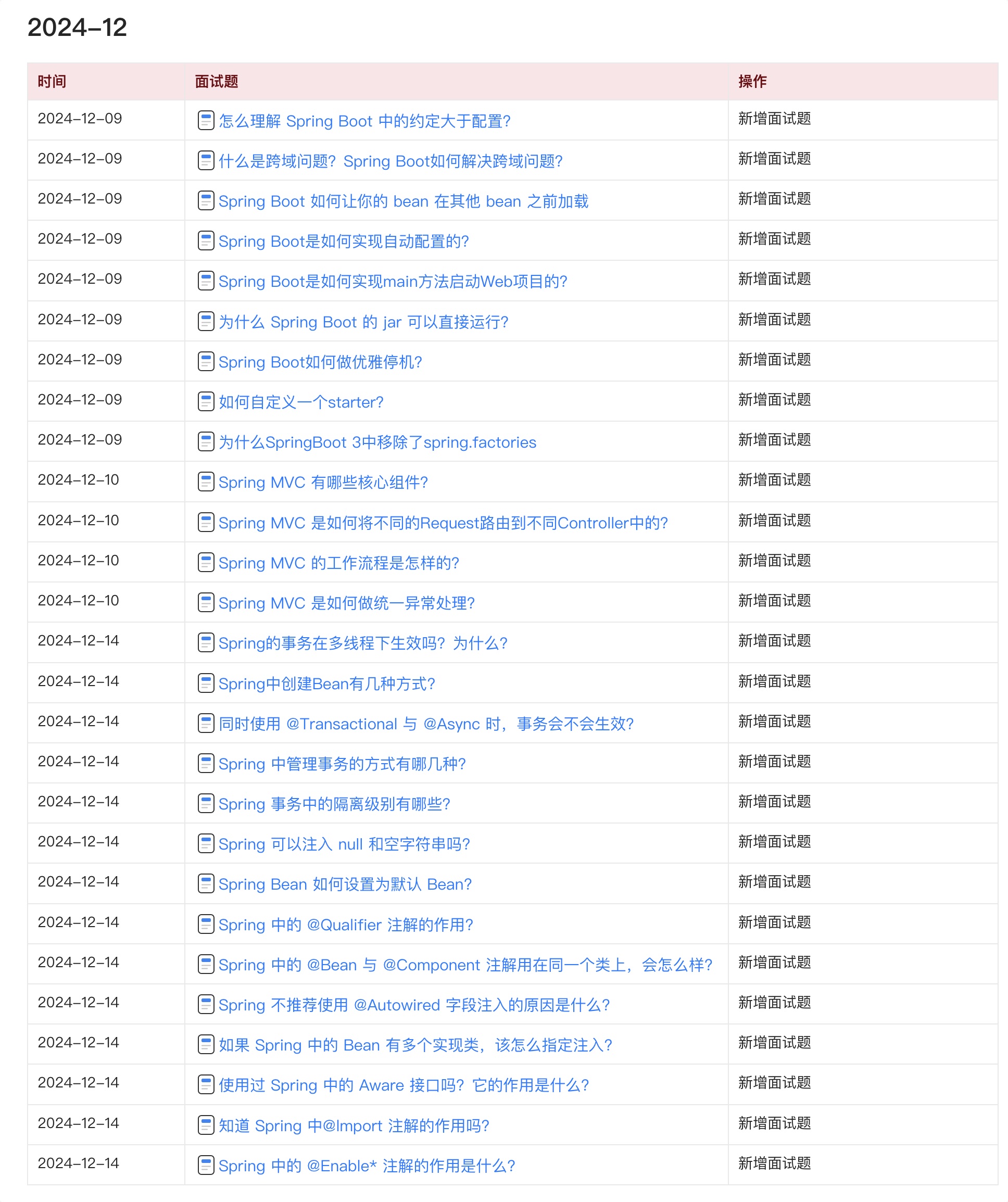AutowiredAnnotationBeanPostProcessor继承了InstantiationAwareBeanPostProcessorAdapter间接实现了SmartInstantiationAwareBeanPostProcessor接口覆盖了determineCandidateConstructors()方法,此方法在实例化bean前选取一个构造方法数组,请参考bean创建的流程https://blog.csdn.net/shenchaohao12321/article/details/80441204和https://blog.csdn.net/shenchaohao12321/article/details/80535708
先看determineCandidateConstructors()方法的前一小段是处理@Lookup注解的。
if (!this.lookupMethodsChecked.contains(beanName)) {
try {
ReflectionUtils.doWithMethods(beanClass, method -> {
Lookup lookup = method.getAnnotation(Lookup.class);
if (lookup != null) {
Assert.state(beanFactory != null, "No BeanFactory available");
LookupOverride override = new LookupOverride(method, lookup.value());
try {
RootBeanDefinition mbd = (RootBeanDefinition) beanFactory.getMergedBeanDefinition(beanName);
mbd.getMethodOverrides().addOverride(override);
}
catch (NoSuchBeanDefinitionException ex) {
throw new BeanCreationException(beanName,
"Cannot apply @Lookup to beans without corresponding bean definition");
}
}
});
}
catch (IllegalStateException ex) {
throw new BeanCreationException(beanName, "Lookup method resolution failed", ex);
}
this.lookupMethodsChecked.add(beanName);
}
将beanClass被@Lookup标记的方法封装到LookupOverride中,通过mbd.getMethodOverrides().addOverride(override)加入到BeanDefinition中,后面会在AbstractAutowireCapableBeanFactory的instantiateBean()方法中,会使用CglibSubclassingInstantiationStrategy的instantiate()方法创建bean对象。
@Override
public Object instantiate(RootBeanDefinition bd, @Nullable String beanName, BeanFactory owner) {
// Don't override the class with CGLIB if no overrides.
if (!bd.hasMethodOverrides()) {
Constructor<?> constructorToUse;
synchronized (bd.constructorArgumentLock) {
constructorToUse = (Constructor<?>) bd.resolvedConstructorOrFactoryMethod;
if (constructorToUse == null) {
final Class<?> clazz = bd.getBeanClass();
if (clazz.isInterface()) {
throw new BeanInstantiationException(clazz, "Specified class is an interface");
}
try {
if (System.getSecurityManager() != null) {
constructorToUse = AccessController.doPrivileged(
(PrivilegedExceptionAction<Constructor<?>>) clazz::getDeclaredConstructor);
}
else {
constructorToUse = clazz.getDeclaredConstructor();
}
bd.resolvedConstructorOrFactoryMethod = constructorToUse;
}
catch (Throwable ex) {
throw new BeanInstantiationException(clazz, "No default constructor found", ex);
}
}
}
return BeanUtils.instantiateClass(constructorToUse);
}
else {
// Must generate CGLIB subclass.
return instantiateWithMethodInjection(bd, beanName, owner);
}
}
可以看到如果!bd.hasMethodOverrides()则走instantiateWithMethodInjection()方法,这个方法内使用了CglibSubclassingInstantiationStrategy内部类CglibSubclassCreator来创建cglib的代理对象。CglibSubclassCreator使用的callback拦截器就包含LookupOverrideMethodInterceptor。
private static class LookupOverrideMethodInterceptor extends CglibIdentitySupport implements MethodInterceptor {
private final BeanFactory owner;
public LookupOverrideMethodInterceptor(RootBeanDefinition beanDefinition, BeanFactory owner) {
super(beanDefinition);
this.owner = owner;
}
@Override
public Object intercept(Object obj, Method method, Object[] args, MethodProxy mp) throws Throwable {
// Cast is safe, as CallbackFilter filters are used selectively.
LookupOverride lo = (LookupOverride) getBeanDefinition().getMethodOverrides().getOverride(method);
Assert.state(lo != null, "LookupOverride not found");
Object[] argsToUse = (args.length > 0 ? args : null); // if no-arg, don't insist on args at all
if (StringUtils.hasText(lo.getBeanName())) {
return (argsToUse != null ? this.owner.getBean(lo.getBeanName(), argsToUse) :
this.owner.getBean(lo.getBeanName()));
}
else {
return (argsToUse != null ? this.owner.getBean(method.getReturnType(), argsToUse) :
this.owner.getBean(method.getReturnType()));
}
}
}
如果调用的方法是被标记的,如果配置了@Lookup的value属性则从BeanFactory中取出bean name为@Lookup的value属性的bean对象返回,否则根据方法的返回类型从BeanFactory中取出相应的bean对象。
以上就是@Lookup的处理过程。
determineCandidateConstructors()方法的剩余部分就是挑选出候选的构造方法,从所有声明的构造方法选取带有@Autowired注解的,但是@Autowired的required==true的只能有一个,如果还有无参构造方法,再加上无参构造方法。如下:
// Quick check on the concurrent map first, with minimal locking.
Constructor<?>[] candidateConstructors = this.candidateConstructorsCache.get(beanClass);
if (candidateConstructors == null) {
// Fully synchronized resolution now...
synchronized (this.candidateConstructorsCache) {
candidateConstructors = this.candidateConstructorsCache.get(beanClass);
if (candidateConstructors == null) {
Constructor<?>[] rawCandidates;
try {
rawCandidates = beanClass.getDeclaredConstructors();
}
catch (Throwable ex) {
throw new BeanCreationException(beanName,
"Resolution of declared constructors on bean Class [" + beanClass.getName() +
"] from ClassLoader [" + beanClass.getClassLoader() + "] failed", ex);
}
List<Constructor<?>> candidates = new ArrayList<>(rawCandidates.length);
Constructor<?> requiredConstructor = null;
Constructor<?> defaultConstructor = null;
Constructor<?> primaryConstructor = BeanUtils.findPrimaryConstructor(beanClass);
int nonSyntheticConstructors = 0;
for (Constructor<?> candidate : rawCandidates) {
// 非合成的,用户自定义的构造方法都是非合成的,JVM可能会产生合成的因此过滤掉
if (!candidate.isSynthetic()) {
nonSyntheticConstructors++;
}
else if (primaryConstructor != null) {
continue;
}
// 构造方法上所有注解属性
AnnotationAttributes ann = findAutowiredAnnotation(candidate);
// 子类没有的话可能父类构造方法存在(覆盖了)
if (ann == null) {
Class<?> userClass = ClassUtils.getUserClass(beanClass);
if (userClass != beanClass) {
try {
Constructor<?> superCtor =
userClass.getDeclaredConstructor(candidate.getParameterTypes());
ann = findAutowiredAnnotation(superCtor);
}
catch (NoSuchMethodException ex) {
// Simply proceed, no equivalent superclass constructor found...
}
}
}
if (ann != null) {
// 只允许存在一个@Autowired(required=true)的构造方法
if (requiredConstructor != null) {
throw new BeanCreationException(beanName,
"Invalid autowire-marked constructor: " + candidate +
". Found constructor with 'required' Autowired annotation already: " +
requiredConstructor);
}
boolean required = determineRequiredStatus(ann);
if (required) {
if (!candidates.isEmpty()) {
throw new BeanCreationException(beanName,
"Invalid autowire-marked constructors: " + candidates +
". Found constructor with 'required' Autowired annotation: " +
candidate);
}
requiredConstructor = candidate;
}
candidates.add(candidate);
}
// 默认构造方法
else if (candidate.getParameterCount() == 0) {
defaultConstructor = candidate;
}
}
if (!candidates.isEmpty()) {
// Add default constructor to list of optional constructors, as fallback.
if (requiredConstructor == null) {
// 如果不存在@Autowired构造方法,无惨构造方法没有@Autowired也作为候选
if (defaultConstructor != null) {
candidates.add(defaultConstructor);
}
else if (candidates.size() == 1 && logger.isInfoEnabled()) {
logger.info("Inconsistent constructor declaration on bean with name '" + beanName +
"': single autowire-marked constructor flagged as optional - " +
"this constructor is effectively required since there is no " +
"default constructor to fall back to: " + candidates.get(0));
}
}
candidateConstructors = candidates.toArray(new Constructor<?>[0]);
}
// 只存在一个构造方法只能用它了
else if (rawCandidates.length == 1 && rawCandidates[0].getParameterCount() > 0) {
candidateConstructors = new Constructor<?>[] {rawCandidates[0]};
}
// 如果只有两个构造方法,一个是带有@Primary一个是无参不带注解的,则这两个都作为候选构造方法
else if (nonSyntheticConstructors == 2 && primaryConstructor != null &&
defaultConstructor != null && !primaryConstructor.equals(defaultConstructor)) {
candidateConstructors = new Constructor<?>[] {primaryConstructor, defaultConstructor};
}
// 只有一个@Primary构造方法
else if (nonSyntheticConstructors == 1 && primaryConstructor != null) {
candidateConstructors = new Constructor<?>[] {primaryConstructor};
}
else {
candidateConstructors = new Constructor<?>[0];
}
this.candidateConstructorsCache.put(beanClass, candidateConstructors);
}
}
}
return (candidateConstructors.length > 0 ? candidateConstructors : null);
一个bean实例创建之后但此时还没有调用populateBean()方法完成属性的填充时,会经历MergedBeanDefinitionPostProcessor的postProcessMergedBeanDefinition()方法。

@Override
public void postProcessMergedBeanDefinition(RootBeanDefinition beanDefinition, Class<?> beanType, String beanName) {
// InjectionMetadata可对指定对象进行注入(字段或方法)
InjectionMetadata metadata = findAutowiringMetadata(beanName, beanType, null);
metadata.checkConfigMembers(beanDefinition);
}
private InjectionMetadata findAutowiringMetadata(String beanName, Class<?> clazz, @Nullable PropertyValues pvs) {
// Fall back to class name as cache key, for backwards compatibility with custom callers.
String cacheKey = (StringUtils.hasLength(beanName) ? beanName : clazz.getName());
// Quick check on the concurrent map first, with minimal locking.
InjectionMetadata metadata = this.injectionMetadataCache.get(cacheKey);
if (InjectionMetadata.needsRefresh(metadata, clazz)) {
synchronized (this.injectionMetadataCache) {
metadata = this.injectionMetadataCache.get(cacheKey);
if (InjectionMetadata.needsRefresh(metadata, clazz)) {
if (metadata != null) {
metadata.clear(pvs);
}
// 构建由@Autowired、@Value、@Inject注解的字段或方法的InjectionMetadata
metadata = buildAutowiringMetadata(clazz);
this.injectionMetadataCache.put(cacheKey, metadata);
}
}
}
return metadata;
}
injectionMetadataCache是一个Map对象,缓存beanName与InjectionMetadata。InjectionMetadata对象通过buildAutowiringMetadata()方法来创建的。
private InjectionMetadata buildAutowiringMetadata(final Class<?> clazz) {
LinkedList<InjectionMetadata.InjectedElement> elements = new LinkedList<>();
Class<?> targetClass = clazz;
do {
final LinkedList<InjectionMetadata.InjectedElement> currElements = new LinkedList<>();
ReflectionUtils.doWithLocalFields(targetClass, field -> {
AnnotationAttributes ann = findAutowiredAnnotation(field);
if (ann != null) {
if (Modifier.isStatic(field.getModifiers())) {
if (logger.isWarnEnabled()) {
logger.warn("Autowired annotation is not supported on static fields: " + field);
}
return;
}
boolean required = determineRequiredStatus(ann);
// 保存带有自动装配注解的非静态字段
currElements.add(new AutowiredFieldElement(field, required));
}
});
ReflectionUtils.doWithLocalMethods(targetClass, method -> {
Method bridgedMethod = BridgeMethodResolver.findBridgedMethod(method);
if (!BridgeMethodResolver.isVisibilityBridgeMethodPair(method, bridgedMethod)) {
return;
}
AnnotationAttributes ann = findAutowiredAnnotation(bridgedMethod);
if (ann != null && method.equals(ClassUtils.getMostSpecificMethod(method, clazz))) {
if (Modifier.isStatic(method.getModifiers())) {
if (logger.isWarnEnabled()) {
logger.warn("Autowired annotation is not supported on static methods: " + method);
}
return;
}
if (method.getParameterCount() == 0) {
if (logger.isWarnEnabled()) {
logger.warn("Autowired annotation should only be used on methods with parameters: " +
method);
}
}
boolean required = determineRequiredStatus(ann);
PropertyDescriptor pd = BeanUtils.findPropertyForMethod(bridgedMethod, clazz);
// 保存带有自动装配注解的非静态方法
currElements.add(new AutowiredMethodElement(method, required, pd));
}
});
elements.addAll(0, currElements);
targetClass = targetClass.getSuperclass();
}
while (targetClass != null && targetClass != Object.class);
return new InjectionMetadata(clazz, elements);
}
buildAutowiringMetadata()方法分为对字段与方法的@Autowired(@Value,@Inject)注解处理。将标记@Autowired的费静态字段封装为AutowiredFieldElement对象,将标记@Autowired的非静态方法封装到AutowiredMethodElement对象然后都加入到InjectionMetadata中,此过程是一个循环过程此类处理完会沿着父类继续向上处理。AutowiredFieldElement与AutowiredMethodElement都是InjectionMetadata.InjectedElement的子类,都覆盖了父类的inject()方法这个下面会介绍。
通过findAutowiringMetadata()方法得到了InjectionMetadata对象之后调用了给对象的checkConfigMembers()方法。这个方法就是将上面保存的InjectedElement对象筛选出那些不存在于beanDefinition中的赋值给checkedElements。
public void checkConfigMembers(RootBeanDefinition beanDefinition) {
Set<InjectedElement> checkedElements = new LinkedHashSet<>(this.injectedElements.size());
for (InjectedElement element : this.injectedElements) {
Member member = element.getMember();
if (!beanDefinition.isExternallyManagedConfigMember(member)) {
beanDefinition.registerExternallyManagedConfigMember(member);
checkedElements.add(element);
if (logger.isDebugEnabled()) {
logger.debug("Registered injected element on class [" + this.targetClass.getName() + "]: " + element);
}
}
}
this.checkedElements = checkedElements;
}
到这为止就是postProcessMergedBeanDefinition()方法的全部实现逻辑并没有做什么实际事情,其实是为了后面的行为做铺垫,请看postProcessPropertyValues()方法(在Spring5.1推荐使用postProcessProperties方法),此方法是在属性填充阶段被调用的。

@Override
public PropertyValues postProcessProperties(PropertyValues pvs, Object bean, String beanName) {
InjectionMetadata metadata = findAutowiringMetadata(beanName, bean.getClass(), pvs);
try {
metadata.inject(bean, beanName, pvs);
}
catch (BeanCreationException ex) {
throw ex;
}
catch (Throwable ex) {
throw new BeanCreationException(beanName, "Injection of autowired dependencies failed", ex);
}
return pvs;
}
@Deprecated
@Override
public PropertyValues postProcessPropertyValues(
PropertyValues pvs, PropertyDescriptor[] pds, Object bean, String beanName) {
return postProcessProperties(pvs, bean, beanName);
}
首先调用 findAutowiringMetadata()方法从缓存中再次取到InjectionMetadata对象,调用inject()方法完成autowired注入。
public void inject(Object target, @Nullable String beanName, @Nullable PropertyValues pvs) throws Throwable {
Collection<InjectedElement> checkedElements = this.checkedElements;
Collection<InjectedElement> elementsToIterate =
(checkedElements != null ? checkedElements : this.injectedElements);
if (!elementsToIterate.isEmpty()) {
boolean debug = logger.isDebugEnabled();
for (InjectedElement element : elementsToIterate) {
if (debug) {
logger.debug("Processing injected element of bean '" + beanName + "': " + element);
}
element.inject(target, beanName, pvs);
}
}
}
因为之前已经把类@Autowired注解标记的字段或方法封装到了响应的InjectedElement子类中了,此时依次调用子类的inject()方法完成对象的注入,下面分别看一看这两种注入的实现。
AutowiredFieldElement,调用BeanFactory的 resolveDependency()方法返回一个符合字段类型的bean对象设置到此bean上。
@Override
protected void inject(Object bean, @Nullable String beanName, @Nullable PropertyValues pvs) throws Throwable {
Field field = (Field) this.member;
Object value;
// 解析过一次会缓存cachedFieldValue
if (this.cached) {
value = resolvedCachedArgument(beanName, this.cachedFieldValue);
}
else {
DependencyDescriptor desc = new DependencyDescriptor(field, this.required);
desc.setContainingClass(bean.getClass());
Set<String> autowiredBeanNames = new LinkedHashSet<>(1);
Assert.state(beanFactory != null, "No BeanFactory available");
TypeConverter typeConverter = beanFactory.getTypeConverter();
try {
value = beanFactory.resolveDependency(desc, beanName, autowiredBeanNames, typeConverter);
}
catch (BeansException ex) {
throw new UnsatisfiedDependencyException(null, beanName, new InjectionPoint(field), ex);
}
synchronized (this) {
if (!this.cached) {
if (value != null || this.required) {
this.cachedFieldValue = desc;
registerDependentBeans(beanName, autowiredBeanNames);
if (autowiredBeanNames.size() == 1) {
String autowiredBeanName = autowiredBeanNames.iterator().next();
if (beanFactory.containsBean(autowiredBeanName) &&
beanFactory.isTypeMatch(autowiredBeanName, field.getType())) {
// 以后注入就可以直接使用这个带有beanname的DependencyDescriptor更高效
this.cachedFieldValue = new ShortcutDependencyDescriptor(
desc, autowiredBeanName, field.getType());
}
}
}
else {
this.cachedFieldValue = null;
}
this.cached = true;
}
}
}
// 字段赋值
if (value != null) {
ReflectionUtils.makeAccessible(field);
field.set(bean, value);
}
}
AutowiredMethodElement,类似通过setter方法完成属性的注入。
@Override
protected void inject(Object bean, @Nullable String beanName, @Nullable PropertyValues pvs) throws Throwable {
if (checkPropertySkipping(pvs)) {
return;
}
Method method = (Method) this.member;
Object[] arguments;
if (this.cached) {
// Shortcut for avoiding synchronization...
arguments = resolveCachedArguments(beanName);
}
else {
Class<?>[] paramTypes = method.getParameterTypes();
arguments = new Object[paramTypes.length];
DependencyDescriptor[] descriptors = new DependencyDescriptor[paramTypes.length];
Set<String> autowiredBeans = new LinkedHashSet<>(paramTypes.length);
Assert.state(beanFactory != null, "No BeanFactory available");
TypeConverter typeConverter = beanFactory.getTypeConverter();
for (int i = 0; i < arguments.length; i++) {
MethodParameter methodParam = new MethodParameter(method, i);
DependencyDescriptor currDesc = new DependencyDescriptor(methodParam, this.required);
currDesc.setContainingClass(bean.getClass());
descriptors[i] = currDesc;
try {
Object arg = beanFactory.resolveDependency(currDesc, beanName, autowiredBeans, typeConverter);
if (arg == null && !this.required) {
arguments = null;
break;
}
arguments[i] = arg;
}
catch (BeansException ex) {
throw new UnsatisfiedDependencyException(null, beanName, new InjectionPoint(methodParam), ex);
}
}
synchronized (this) {
if (!this.cached) {
if (arguments != null) {
Object[] cachedMethodArguments = new Object[paramTypes.length];
System.arraycopy(descriptors, 0, cachedMethodArguments, 0, arguments.length);
registerDependentBeans(beanName, autowiredBeans);
if (autowiredBeans.size() == paramTypes.length) {
Iterator<String> it = autowiredBeans.iterator();
for (int i = 0; i < paramTypes.length; i++) {
String autowiredBeanName = it.next();
if (beanFactory.containsBean(autowiredBeanName) &&
beanFactory.isTypeMatch(autowiredBeanName, paramTypes[i])) {
cachedMethodArguments[i] = new ShortcutDependencyDescriptor(
descriptors[i], autowiredBeanName, paramTypes[i]);
}
}
}
this.cachedMethodArguments = cachedMethodArguments;
}
else {
this.cachedMethodArguments = null;
}
this.cached = true;
}
}
}
if (arguments != null) {
try {
ReflectionUtils.makeAccessible(method);
method.invoke(bean, arguments);
}
catch (InvocationTargetException ex){
throw ex.getTargetException();
}
}
}
Java 面试宝典是大明哥全力打造的 Java 精品面试题,它是一份靠谱、强大、详细、经典的 Java 后端面试宝典。它不仅仅只是一道道面试题,而是一套完整的 Java 知识体系,一套你 Java 知识点的扫盲贴。
它的内容包括:
- 大厂真题:Java 面试宝典里面的题目都是最近几年的高频的大厂面试真题。
- 原创内容:Java 面试宝典内容全部都是大明哥原创,内容全面且通俗易懂,回答部分可以直接作为面试回答内容。
- 持续更新:一次购买,永久有效。大明哥会持续更新 3+ 年,累计更新 1000+,宝典会不断迭代更新,保证最新、最全面。
- 覆盖全面:本宝典累计更新 1000+,从 Java 入门到 Java 架构的高频面试题,实现 360° 全覆盖。
- 不止面试:内容包含面试题解析、内容详解、知识扩展,它不仅仅只是一份面试题,更是一套完整的 Java 知识体系。
- 宝典详情:https://www.yuque.com/chenssy/sike-java/xvlo920axlp7sf4k
- 宝典总览:https://www.yuque.com/chenssy/sike-java/yogsehzntzgp4ly1
- 宝典进展:https://www.yuque.com/chenssy/sike-java/en9ned7loo47z5aw
目前 Java 面试宝典累计更新 400+ 道,总字数 42w+。大明哥还在持续更新中,下图是大明哥在 2024-12 月份的更新情况:

想了解详情的小伙伴,扫描下面二维码加大明哥微信【daming091】咨询

同时,大明哥也整理一套目前市面最常见的热点面试题。微信搜[大明哥聊 Java]或扫描下方二维码关注大明哥的原创公众号[大明哥聊 Java] ,回复【面试题】 即可免费领取。

